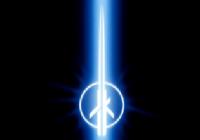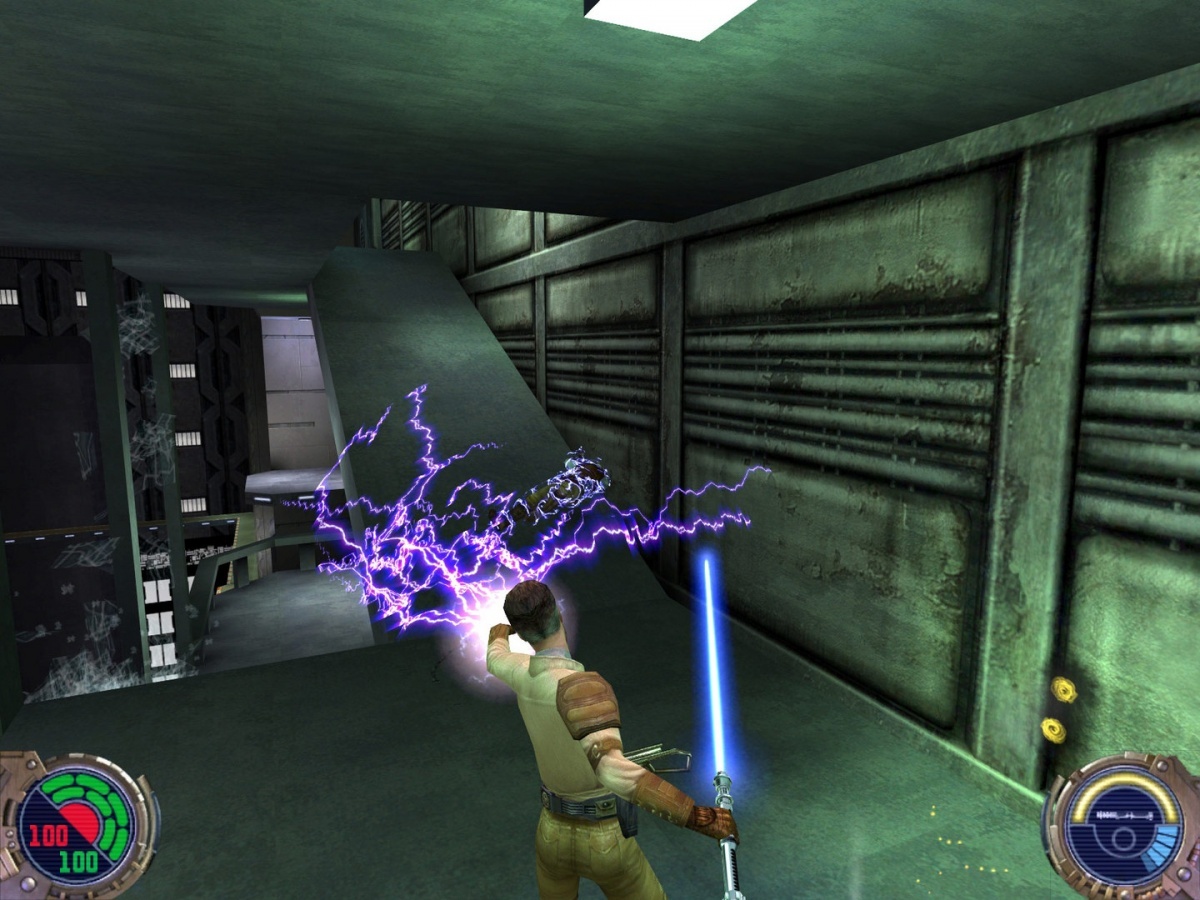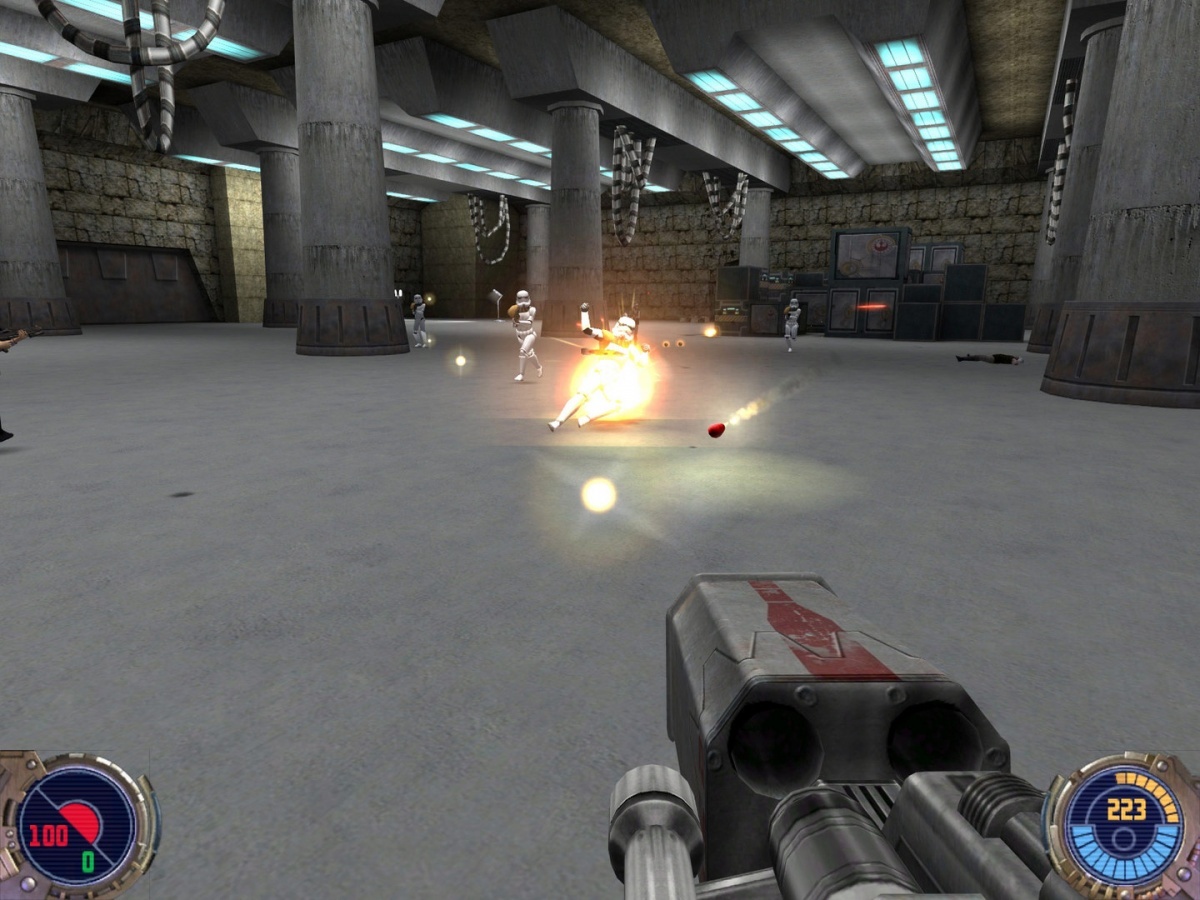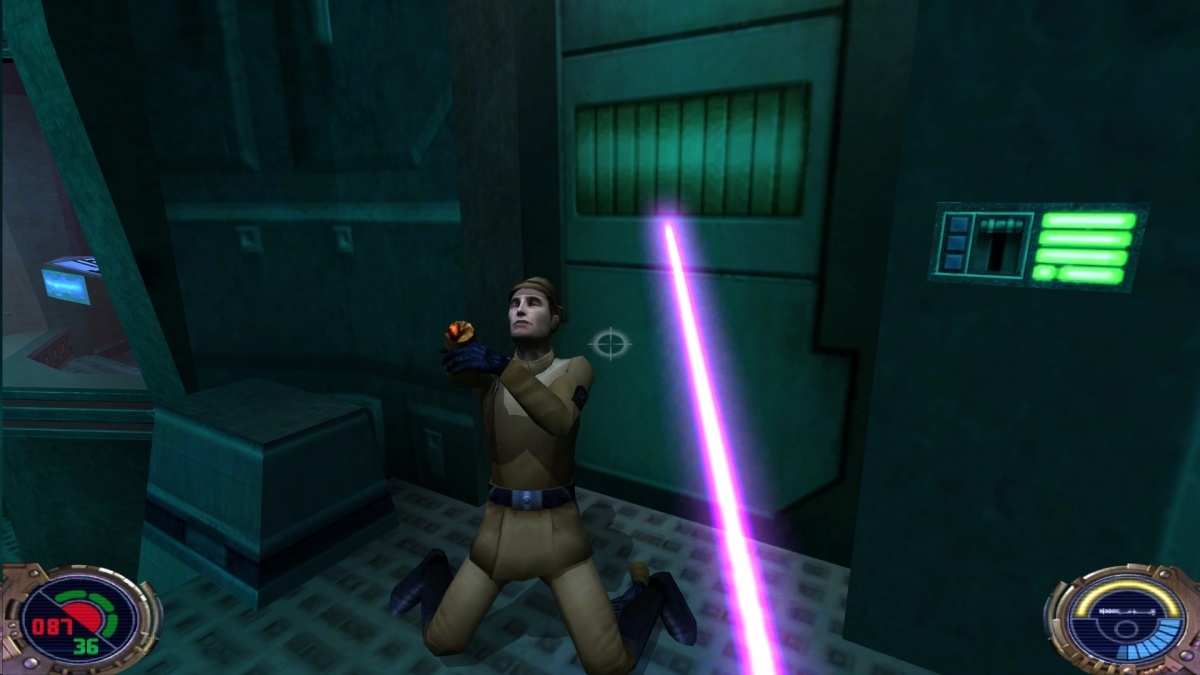Star Wars Jedi Knight II: Jedi Outcast (Nintendo Switch) Review
By Sandy Kirchner-Wilson  30.01.2020
30.01.2020

Jedi Outcast was originally released in 2002 on PC, was met with relatively high praise and was swiftly followed by Xbox and GameCube ports, both released in the same year as the original. The GameCube port was blasted for being subpar compared with the Xbox one in both visual fidelity and framerates. It forms part of the Jedi Knight series, which includes the Dark Forces instalments and Jedi Academy all of which feature protagonist Kyle Katarn. This new HD port on switch contains only the single player mode from it, and as far as this critic can tell, this features no visual upgrades or retooled systems. Bare bones you might say.
Kyle Katarn, mentioned in the intro, is an interesting character who was once a Jedi, but turned his back on the force after almost falling to the dark side. This game has somewhat of a redemption ark for Kyle, who retrains as a Jedi early in on, opening up lightsaber and force power combat. The story is actually one of the highlights here, presented in admittedly very corny and obviously "of their time" cut-scenes, covers a host of series locations, and has some interesting characters. Seeing Kyle wrestle with his dark tendencies leads to some tense moments, where you think he'll snap, offering quite a bit of drama. It features some scenes that harken back to fondly remembered scenes from the movies, with lightsabers in bars and what not.

Gameplay is a mixed bag. On the plus side, the combat is fun, with a healthy mix of shooting and melee combat, with a side helping of tools including the likes of grenades, or thermal detonators as they are called in-universe. The shooting is a little fiddly to begin with, especially with disconnected Joycon when playing on the TV (more on this later) but once you adjust to the twitch-iness, it's easy enough to blast Stormtroopers in the face. The lightsaber combat is clunky, but satisfying, with directional attack inputs, and plenty of jump dodging and blocking, this is where the game shines most as a Star Wars title, and where the lack of multiplayer really stings the overall life span.
On the negative side is the platforming, which is frustrating as the adventure includes death pits, and it all controls kind of floatily, making it hard to nail the harder jumps in later levels. This can be minimised once the force powers come in, but expect to have a hard time with traversal. While there are frustrations and occasional confusing maze-like level designs, most of this is great fun, and the early '00s level design feels satisfying to explore. Most levels are obvious with what the critical path is, but there are optional side rooms with new weapons, health pickups or more enemies, which adds to each level's feeling of completeness.

These are all created with attention to detail, and a level of Star Wars-ness that only games based on the franchise have, with droids wandering around a good mix of aliens and Stormtrooper NPCs, and just enough explosive and destructible items to make the gunplay exciting. There are a few idiosyncrasies in the design that can be a little fiddly, such as triggers for force interactions being too small to activate while running, or a puzzle that requires the player to click on something that has a tiny interaction point that accepts the button click, but these don't destroy the experience in any way, and instead just highlight it's age.
Musically and visually the presentation is great. The soundtrack is pulled straight from the Star Wars movies, including the title crawl and cantina themes, which adds an air of authenticity to the setting, this is backed up by a library of sound effects that not only invokes the original movies, but are well timed and placed in the world, keeping everything grounded, and not giving players false attack indicators. The visuals are obviously old, and a bit rough around the edges, but in general the level of detail on characters is still adequate, and aesthetics in the levels such as colour schemes and most visual effects are of a quality that fits the time perfectly.

The flattest asset is the old lighting system, which has a very flat tone throughout the game, with limited real-time lighting, which feels like it might have been only average when this was made, and now looks awful when compared with titles like Doom 3 which were released only a few years later. So, with all of these old assets, and relatively low feeling resolution, why does this run like mud on the Switch when it's in TV mode?
TV mode in this has a very pronounced control lag unlike any other experience on the platform. Sluggish movement in-game, lag when there are special effects, and control input lag of what feels like an actual second, rather than a few milliseconds. It can be quite off-putting at the start. It's where the conversion shows some rough edges. TV mode having such huge input lag is the main negative of the port, as it makes the gunplay nigh uncontrollable - however, there is technical solace to be found. In handheld mode the control lag is almost 100% negated, and the game becomes significantly more enjoyable, even with the fiddly Joycon control sticks.

Cubed3 Rating
Average
A flawed port that struggles to overcome mediocrity in its implementation, and that suffers from a lack of multiplayer, leads to a less than stellar experience. Star Wars Jedi Outcast is purely saved by its solid level design, and fan service. There are probably better options if you want a good TV experience, but nothing can beat this port's portable experience, which is in all honestly its saving grace. Recommended for fans looking to take it on holiday, and a near miss for fans looking for a Star Wars title worthy of being played in the big screen.
Comments
Comments are currently disabled

 Sign In
Sign In Game Details
Game Details
 None
None  None
None  None
None  None
None  Subscribe to this topic
Subscribe to this topic Features
Features





 Top
Top

